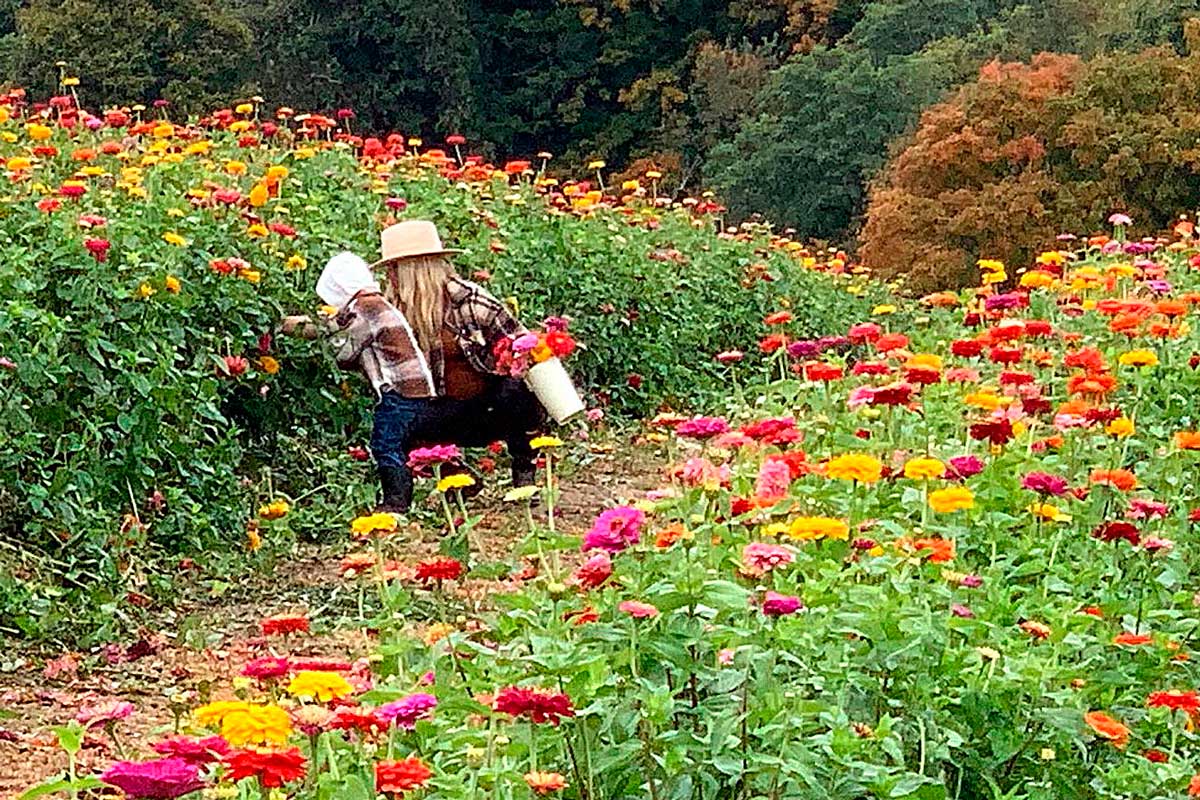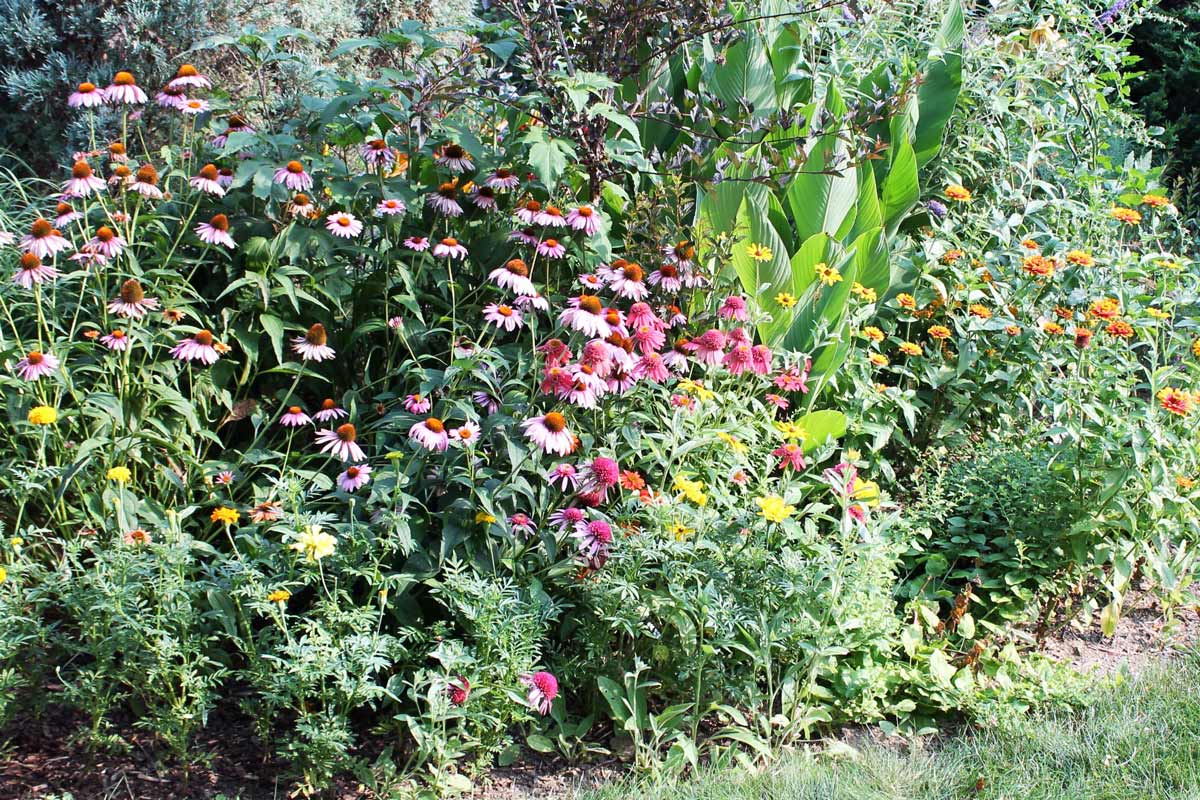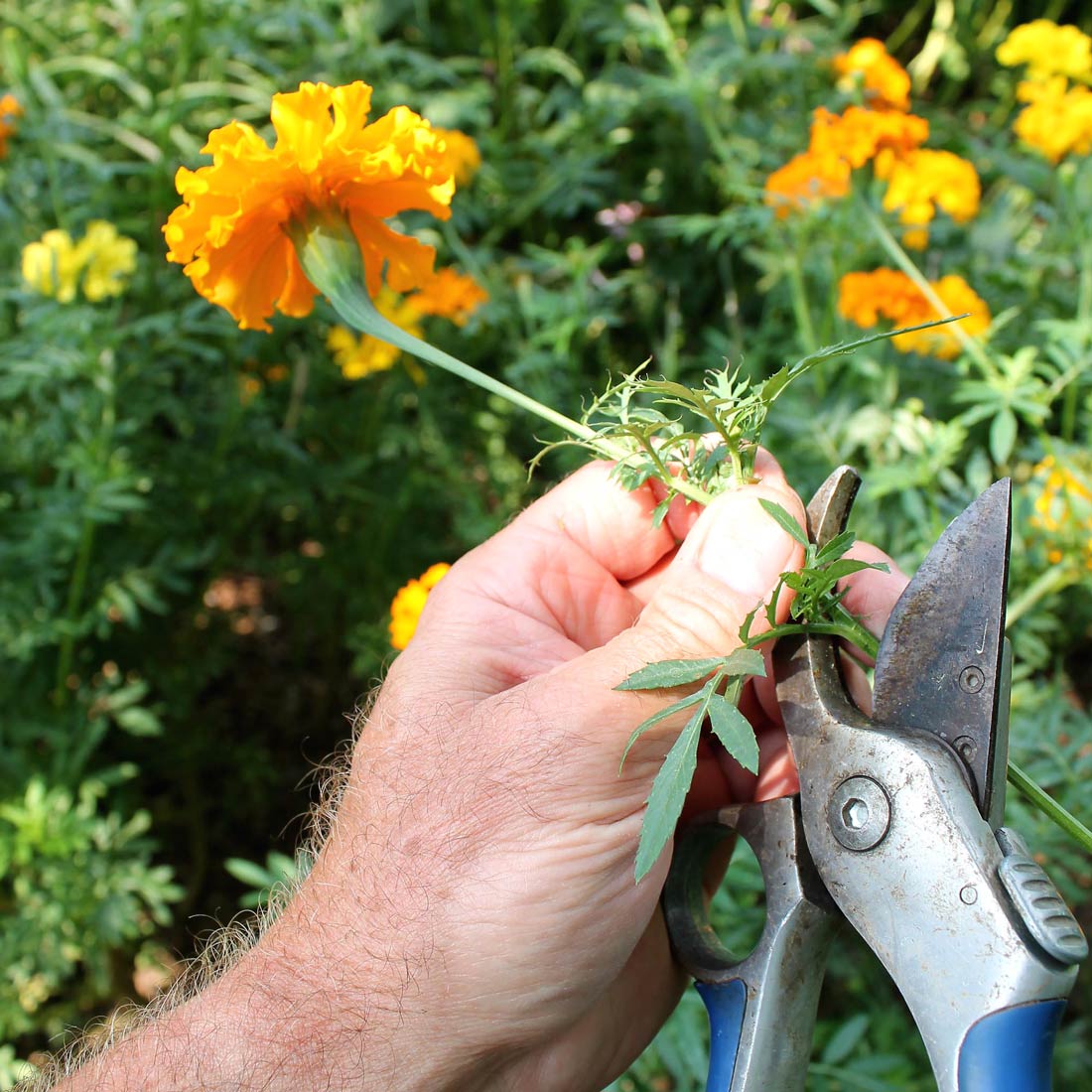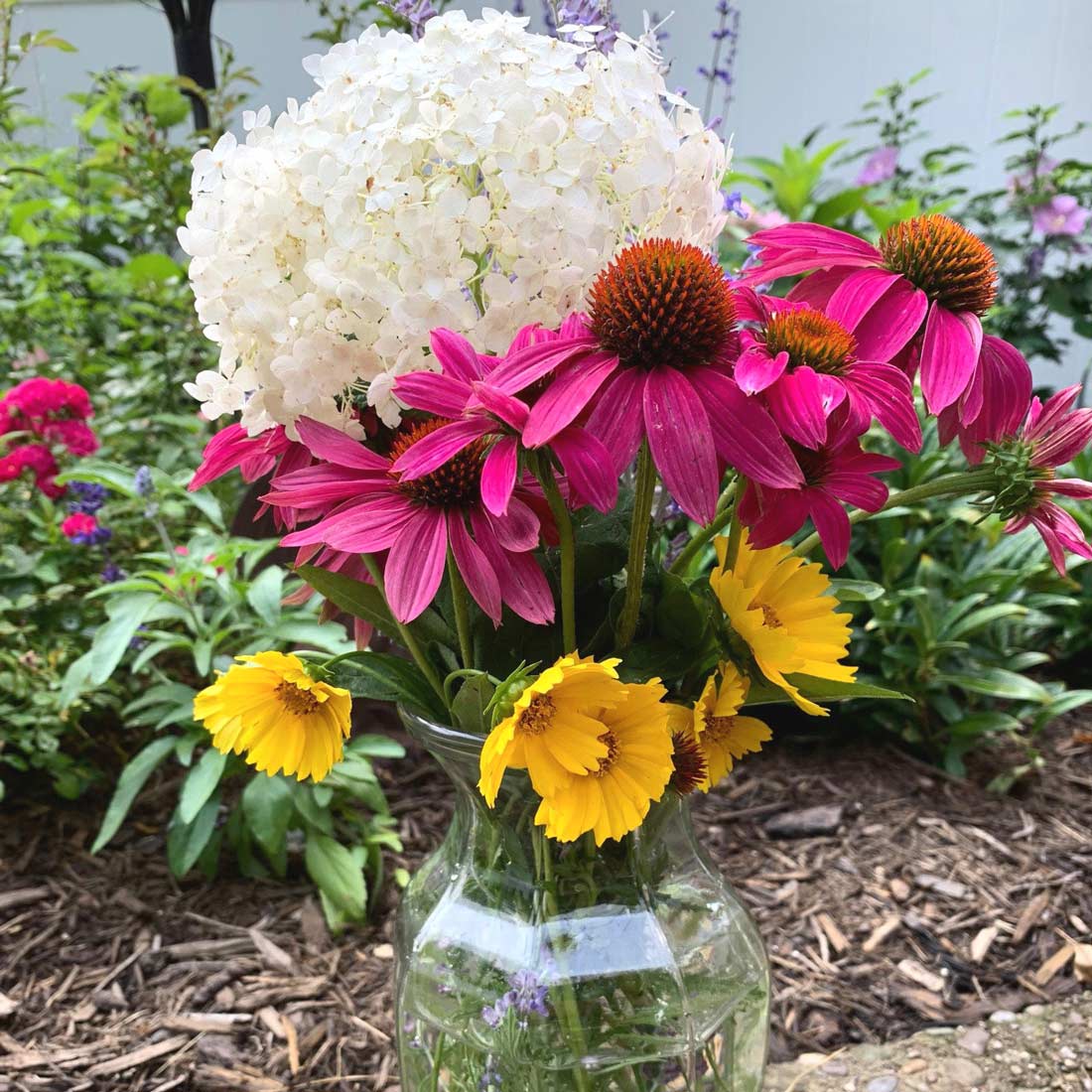Plant These Annuals for Beautiful Cut Flowers from Summer through Fall
Here are five easy-to-grow annuals to try in your garden and enjoy in bouquets.

Many new local cut-flower operations have popped up in recent years as DIY cut-flower bouquets have become trendy. George Weigel
Flowers light up the summer landscape, but many gardeners milk even more mileage out of their blooming work by cutting flowers for inside enjoyment.
Interest in cut flowers – both home-grown and store-bought – grew during the COVID pandemic as cocooners turned to bouquets to add a touch a cheer to at-home isolations.
Numerous studies highlighting the benefits of flowers around the house haven’t hurt either. Harvard, Rutgers University, and Texas A&M are among those that recently documented the health value of flowers, including mitigating feelings of depression and anxiety, improving mood, stimulating productivity, and even aiding memory.
Most of the same cut-flower choices being grown for local commerce can be grown easily in a home garden. Flowers don’t get any fresher (or cheaper) than when harvested from out the back door.
Many gardeners also like the idea of adding flowers to benefit pollinators or making bouquets to give to friends and neighbors.

Purple coneflowers and many other perennials make good home-grown cut flowers. George Weigel
With sufficient diversity, it’s possible to have a steady stream of blooms for cutting throughout the growing season.
Annual flowers make some of the best choices because most bloom throughout the season and keep producing as earlier blooms are cut.
Good ones include zinnia, marigold, angelonia, bachelor’s button, calendula, celosia, cosmos, dahlia, dianthus (“pinks”), globe amaranth, lisianthus, sunflower, Mexican sunflower, statice, and snapdragon.
Many perennial flowers and flowering shrubs are fair game for a vase, too.
Good cut-flower perennials include black-eyed susan, yarrow, Shasta daisy, purple coneflower, lily, perennial sunflower, heliopsis, mum, goldenrod, astilbe, baby’s breath, carnation, lavender, liatris, foxglove, iris, gaillardia, aster, salvia, coreopsis, lupine, tall garden phlox, bee balm, penstemon, poppy, and veronica.
Besides the obvious roses, other good shrubs for cut use include hydrangea, lilac, caryopteris, viburnum, mock orange, cherry, crabapple, forsythia, and sterile varieties of butterfly bush.
Add foliage options like conifers, ferns, ornamental grasses, and colorful perennial leaves to the mix, and it’s possible to harvest DIY bouquets nearly year-round.

Cut as much stem as you can when harvesting flowers. George Wiegel
The hardest part for some gardeners is getting up the gumption to cut off flowers that look good in the landscape. If that’s an issue, an alternative is planting a garden specifically for cut flowers.
Cut-flower gardens are production-oriented gardens, more similar to vegetable gardens than landscape beds.
Sunny sites are usually best since most blooming plants produce best with at least six hours of full sun per day. Good soil is a must, too.
Work two to three inches of compost into compacted or poorly drained soil to create raised beds that are much friendlier to young roots.
A soil test is also a good idea to determine what nutrients your bed might need and in what amounts. Amendments are best added at planting time.
If you don’t have a good site or your soil is really bad, cut flowers also can be grown in pots.
To maximize blooming, fertilize according to the test recommendations, keep the soil consistently damp, and snip flowers regularly.
That includes “deadheading” any spent flowers left behind on the plants. Especially with annual flowers, new flower buds keep coming when energy isn’t diverted into seed production.

Get cut flowers in water in a vase ASAP. George Weigel
To maximize the life of cut flowers, take a bucket of lukewarm water into the garden and place the stems in it as you cut. Early morning and evening are the two best times.
Use sharp scissors or pruners and look for flowers with buds that are just about to open. Exceptions are calendula, dahlias, zinnias, marigolds, black-eyed susans, coneflowers, sunflowers, gaillardia, and coreopsis, which do best cut when the flowers have fully opened.
While harvesting, cut the flower stems back to the main stem or as long as you can get them so you’ll have plenty to work with when arranging. Then strip off the lower leaves before placing the stems in the water pail.
When you’re ready to arrange, make fresh cuts at the desired heights while holding the stems underwater. Get the flowers into the vase with water ASAP. This keeps the base of the stems from sealing, which will shorten their life by preventing the cut stems from taking up water.
Most florists recommend using a commercial preservative in the vase water. Preservatives contain carbohydrates to encourage bud development and anti-bacterial agents to discourage rotting.
Change the water every two or three days to maximize flower life. Use fresh preservative and make fresh cuts to the stem bottoms when changing the water.
Or just replace the flowers as they go downhill with whatever is ready to be cut at the time.